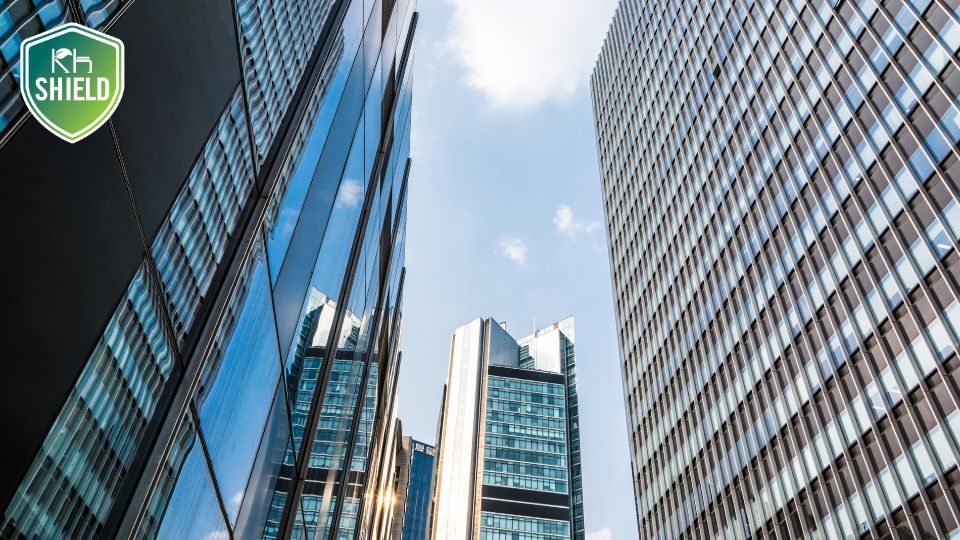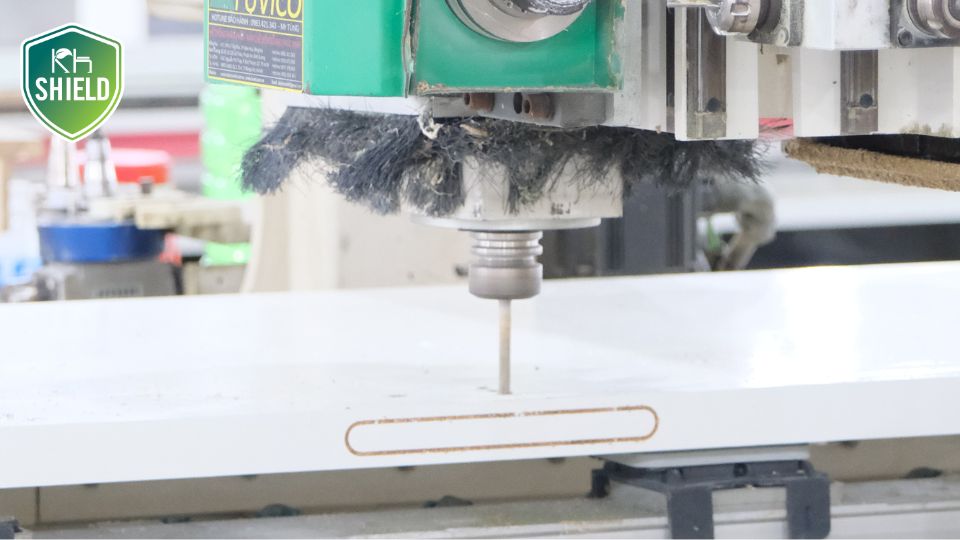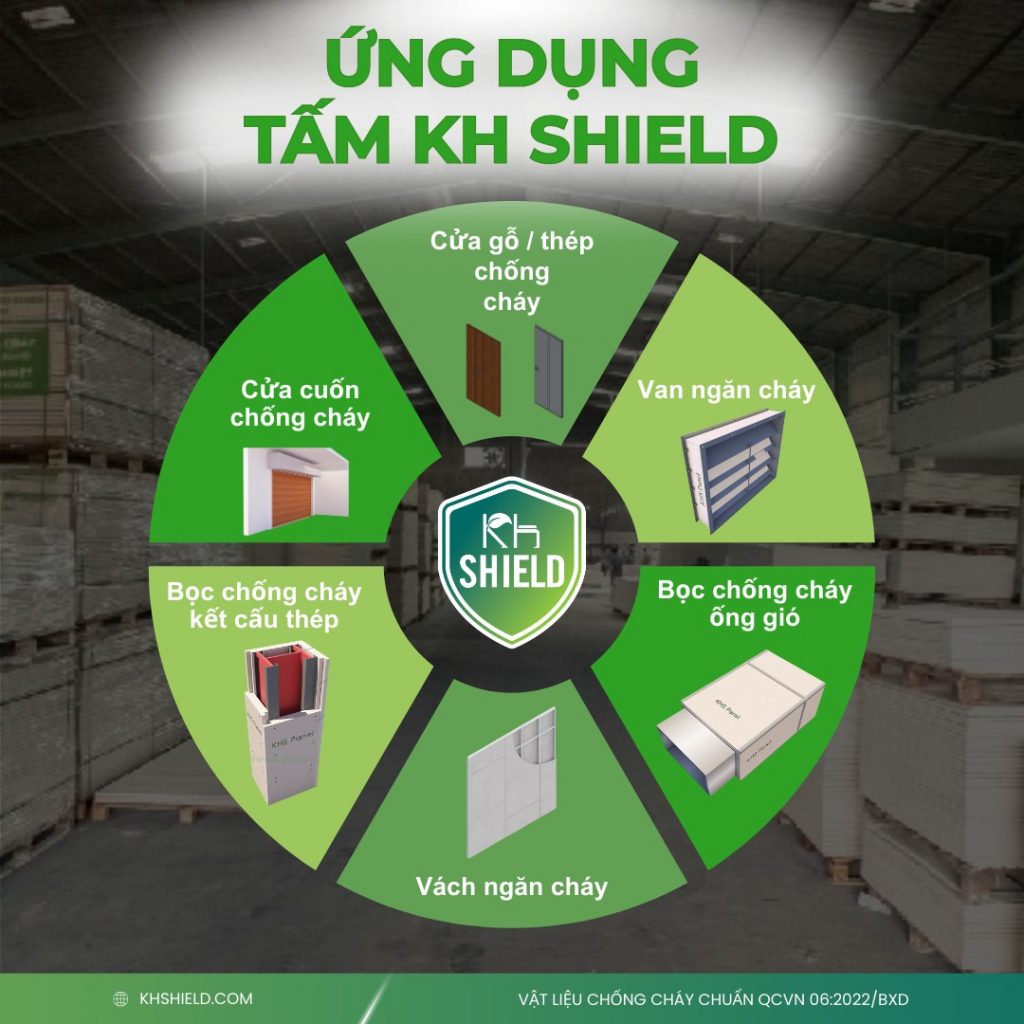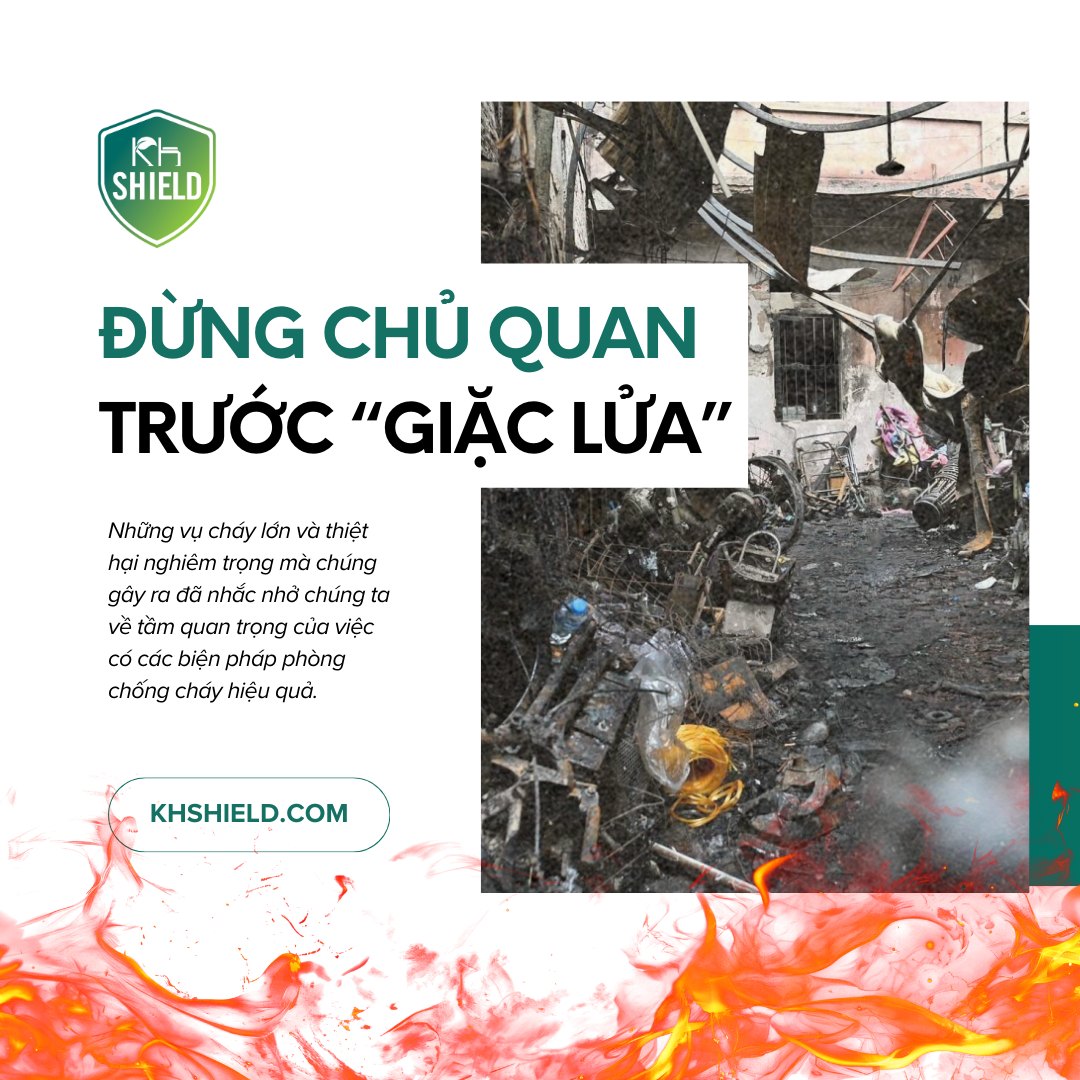
Thematic
Fire protection solutions for high-rise buildings: Selection of materials and equipment
In the modern context, the construction of high-rise buildings is becoming more popular than ever. However, along with the increase in the number of high-rise buildings, the risk of fire also increases, requiring effective fire prevention and fighting (PCCC) solutions. Choosing the right materials and equipment, fire doors is an important part to ensure the safety of residents and property. This article will focus on fire prevention solutions for high-rise buildings, including the selection of high-quality materials and fire protection equipment.

Fire protection solutions from KH Shield
The Importance of Fire Protection Solutions for High-Rise Buildings
In high-rise buildings, fires can spread rapidly through multiple floors, causing great loss of life and property. Therefore, the selection and installation of effective fire protection solutions is indispensable:
- Protecting residents: Fire protection systems ensure that residents have enough time to safely evacuate the building in an emergency.
- Protecting property: Minimizing damage from fire not only protects personal property but also protects the structure of the building.
- Meeting safety standards: Buildings need to comply with national and international fire protection standards to ensure the safety of everyone.
Choosing fire-resistant materials for high-rise buildings
NỘI DUNG BÀI VIẾT
Fire-resistant materials for building structures
The building structure of high-rise buildings plays an important role in limiting the spread of fire:
- Reinforced concrete: This is a popular material for high-rise buildings thanks to its high heat resistance and non-combustibility. However, it is necessary to ensure that reinforced concrete is designed and installed according to fire standards to maintain its load-bearing capacity in the event of a fire.
- Fire-resistant steel: Steel is a strong material but is easily weakened by high temperatures. Therefore, steel is often covered with layers of fire-resistant materials, such as fire-resistant panels or fire-resistant solutions, to protect the structure in the event of a fire.
- Fire-resistant panels: Fire-resistant panels such as Fireshieldpro KHS.FA are used to cover surfaces or as partitions, helping to limit the spread of fire. These panels can withstand high temperatures and prevent the spread of fire.
Fire-resistant materials for door and window systems

Testing the standard of doors using KH Shield panels
Doors and windows are weak points in preventing the spread of fire. Choosing fire doors for apartments is an important factor in protecting the safety of residents:
- Fireproof steel doors: Fireproof steel doors are durable and have good fire resistance, suitable for use in basements, emergency exits or technical areas.
- Fireproof wooden doors: Although wood is a combustible material, fireproof wooden doors are treated with special chemicals to increase fire resistance, often used for interior spaces such as living rooms or offices in apartments.
- Fireproof shutters: These are doors that automatically close when a fire is detected, helping to prevent fire from spreading to other areas of the building.

Production process of doors using KH Shield panels
Choosing fire protection equipment for high-rise buildings
Fire alarm and warning systems
Fire alarm and warning systems play an important role in detecting fire risks early and warning residents:
- Fire detectors: Fire detectors are devices that detect smoke or high temperatures, activating the alarm system to warn of danger.
- Automatic warning system: This system connects to fire detectors and emits sound or light warnings, helping residents know about the risk and quickly evacuate.
Fire suppression systems
Fire suppression systems are installed in high-rise buildings to control and extinguish fires before they spread:
- Automatic sprinklers: Sprinklers are automatic water spray systems that operate when the temperature exceeds the safety threshold, helping to extinguish fires at an early stage.
- Fire extinguishers: Each floor of a high-rise building must be equipped with fire extinguishers so that residents can extinguish fires themselves in an emergency.
- High-pressure misting system: This is a modern system that uses water mist to effectively extinguish fires without causing too much damage to property.
Ventilation and smoke control system
Smoke is one of the biggest risks in fires in high-rise buildings. Properly installing ventilation and smoke control systems will help minimize the risk of smoke inhalation and ensure the safety of residents:
- Automatic ventilation system: This system helps push smoke out of the building when a fire is detected, keeping the air fresh and safe for residents to evacuate.
- Fire shutters: Installed in important areas such as hallways or stairwells, fire shutters help prevent smoke and fire from spreading throughout the building.
Standards to consider for high-rise buildings
Compliance with fire protection standards is mandatory to ensure the safety of high-rise buildings:
- Fire protection standards for steel structures: Steel structures must be covered with fire-resistant materials or treated with fire-resistant solutions to maintain their load-bearing capacity during the fire.
- Fire door installation standards: Apartment fire doors must meet standards such as TCVN 6160:1996 or EN 1634-1 to ensure fire resistance for a certain period of time.
- Regular inspection and maintenance: Fire protection equipment and materials must be periodically inspected and maintained to ensure they are always in good working condition.
Important notes in selecting and installing fire protection solutions for high-rise buildings
Expert advice
Selecting and installing fire protection solutions requires high professional knowledge. Therefore, you should contact fire protection experts for specific advice on each project, ensuring that the solutions are applied appropriately to the characteristics of each building.
Training and instruction on use
In addition to installing fire protection equipment and materials, training and instruction on how to use these devices in an emergency is also very important. This helps residents to react quickly and properly when a fire occurs.
Regular maintenance
Fire protection systems and equipment need to be maintained and inspected regularly. This not only ensures that they operate effectively but also prolongs the life of the equipment, helping to minimize repair and replacement costs.
Update the latest topic
Update highlights

Consultation on fire and explosion prevention solutions














